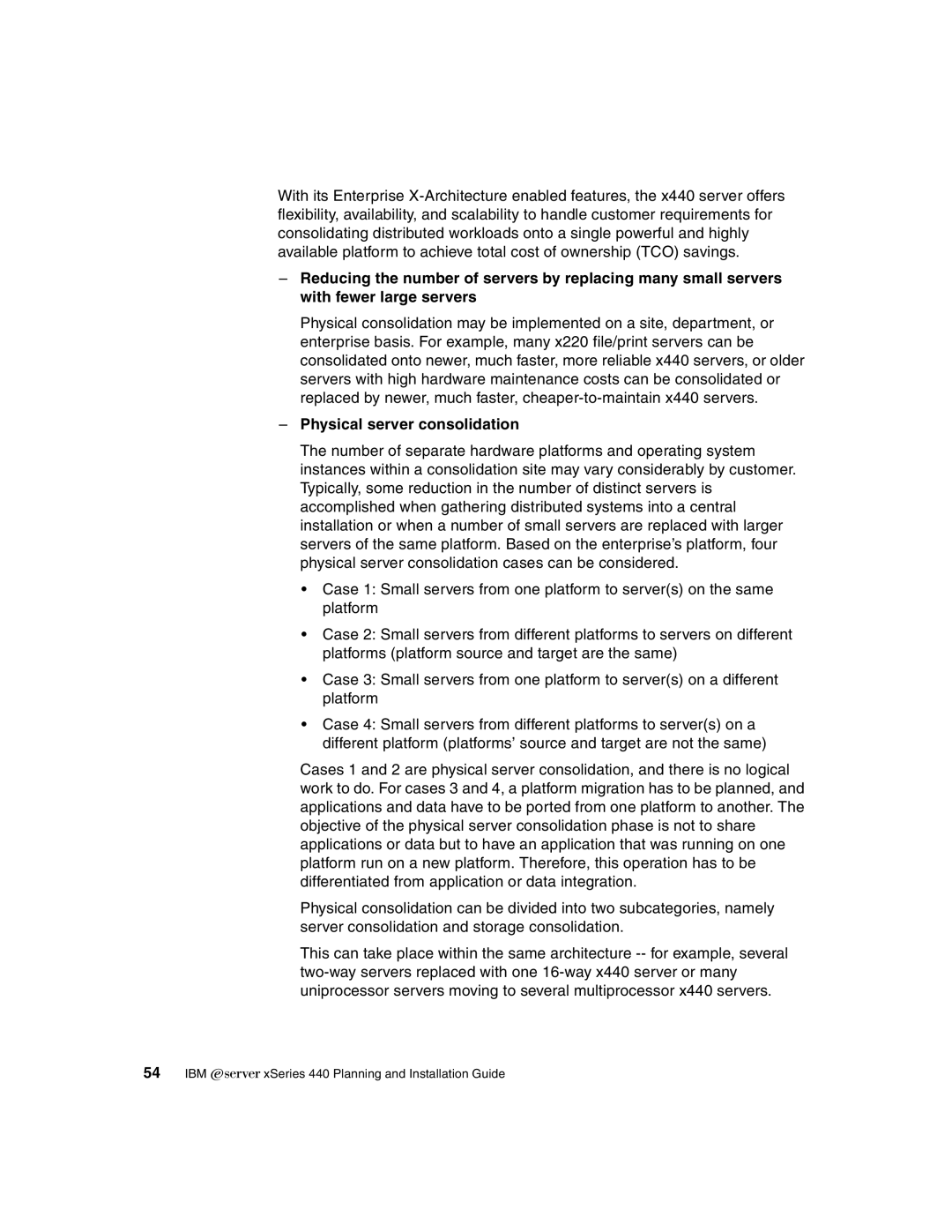With its Enterprise
–Reducing the number of servers by replacing many small servers with fewer large servers
Physical consolidation may be implemented on a site, department, or enterprise basis. For example, many x220 file/print servers can be consolidated onto newer, much faster, more reliable x440 servers, or older servers with high hardware maintenance costs can be consolidated or replaced by newer, much faster,
–Physical server consolidation
The number of separate hardware platforms and operating system instances within a consolidation site may vary considerably by customer. Typically, some reduction in the number of distinct servers is accomplished when gathering distributed systems into a central installation or when a number of small servers are replaced with larger servers of the same platform. Based on the enterprise’s platform, four physical server consolidation cases can be considered.
•Case 1: Small servers from one platform to server(s) on the same platform
•Case 2: Small servers from different platforms to servers on different platforms (platform source and target are the same)
•Case 3: Small servers from one platform to server(s) on a different platform
•Case 4: Small servers from different platforms to server(s) on a different platform (platforms’ source and target are not the same)
Cases 1 and 2 are physical server consolidation, and there is no logical work to do. For cases 3 and 4, a platform migration has to be planned, and applications and data have to be ported from one platform to another. The objective of the physical server consolidation phase is not to share applications or data but to have an application that was running on one platform run on a new platform. Therefore, this operation has to be differentiated from application or data integration.
Physical consolidation can be divided into two subcategories, namely server consolidation and storage consolidation.
This can take place within the same architecture
